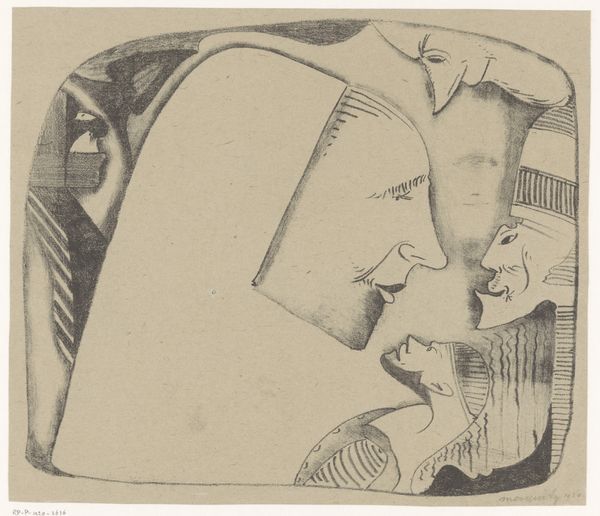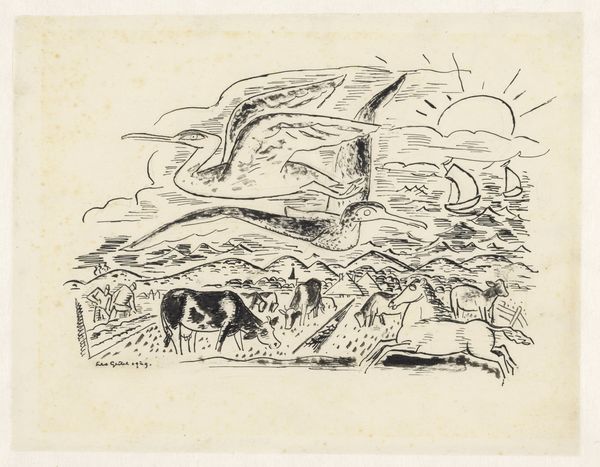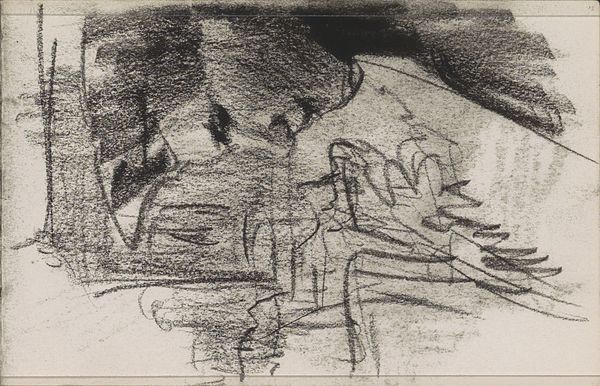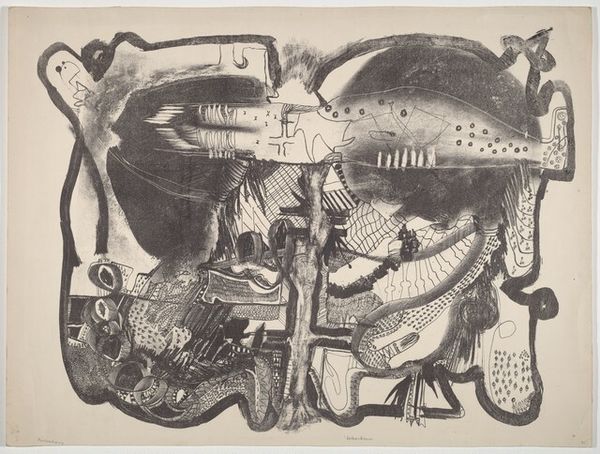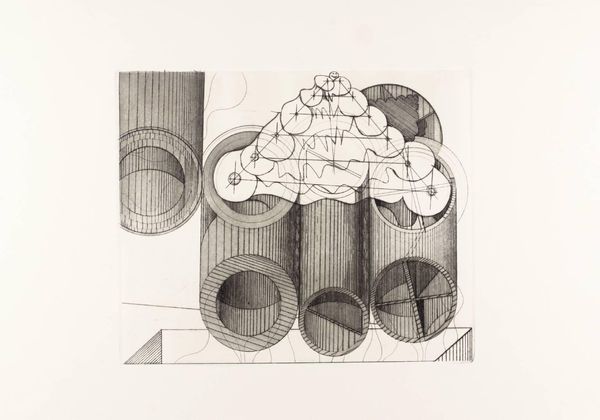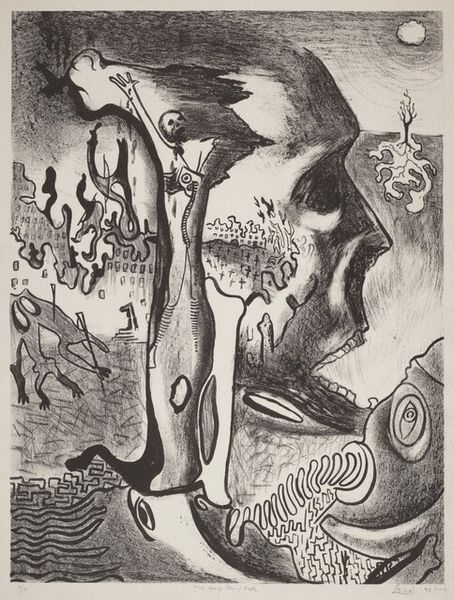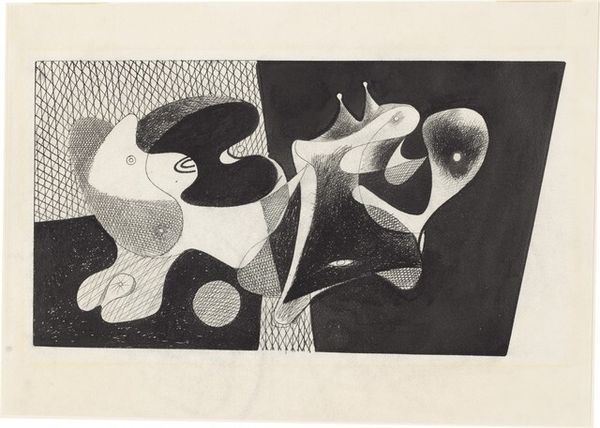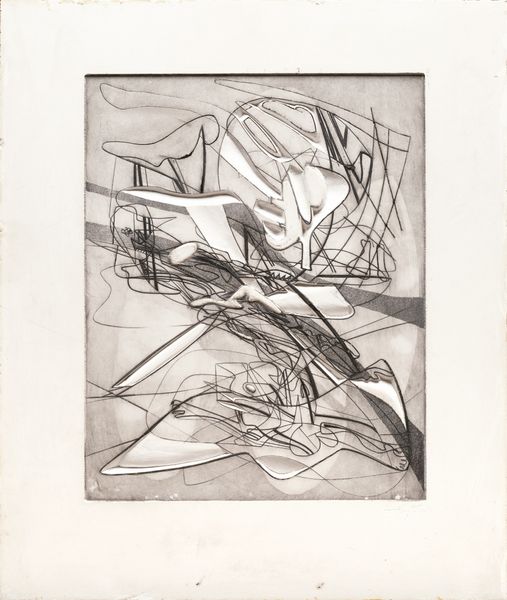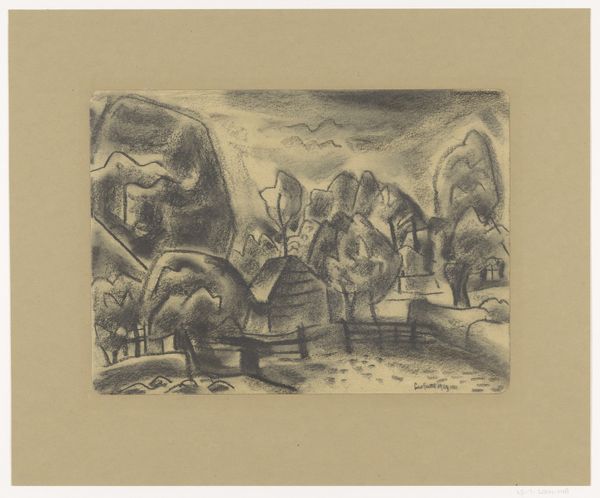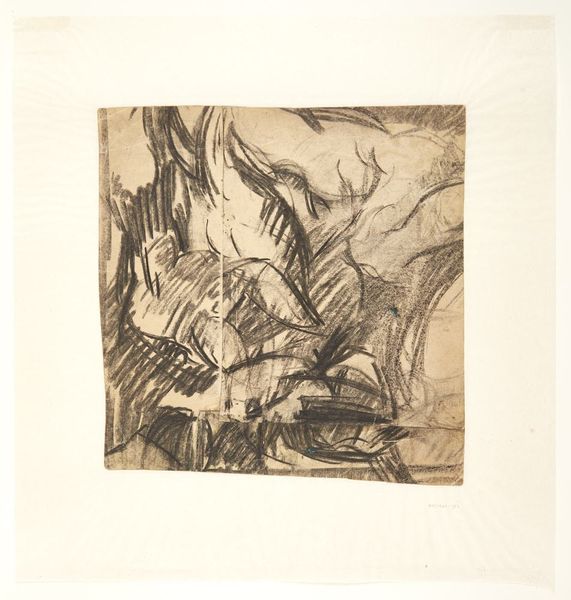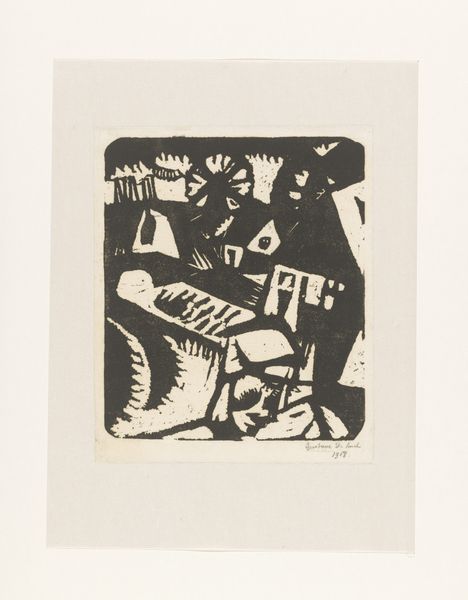
drawing, print, pencil
#
drawing
# print
#
landscape
#
pencil drawing
#
pencil
#
realism
Dimensions: sheet: 10 5/8 x 14 in. (27 x 35.6 cm) image: 8 1/2 x 10 3/4 in. (21.6 x 27.3 cm)
Copyright: Public Domain
Curator: Hughie Lee-Smith’s "Futility," a pencil drawing and print created between 1935 and 1943. What catches your eye about this piece? Editor: A feeling of disquiet and precariousness. There are sharp, fragmented architectural forms jutting out against a turbulent sky. I imagine the sound would be deafening: clattering rubble and a roaring wind. Curator: Yes, it’s an unsettling scene. Lee-Smith completed this work during a very politically charged and tumultuous era. The Great Depression loomed large, and then of course, World War II. The title itself, "Futility," hints at the artist’s sentiments during that time. Editor: The composition feels intentionally chaotic. Like looking at the aftermath of some kind of catastrophic event. Is this meant to symbolize literal destruction, or perhaps a more symbolic sense of societal collapse? Curator: I think Lee-Smith encourages both interpretations. Look how the human figure seems tossed about, almost as debris amongst the ruins. And the broken objects...it’s hard not to think of lost hopes and shattered dreams. Editor: And this style—it has this interesting sense of realism but infused with a very palpable emotional weight. It makes the drawing resonate beyond a simple depiction of a ruined landscape. Do you think this type of emotionally charged art had a purpose for viewers at the time it was made? Curator: Absolutely. I feel it spoke to a shared anxiety, an undercurrent of fear and uncertainty about the future that permeated daily life. But Lee-Smith was doing something radical beyond mere illustration; he was translating collective feeling into visual language. He wasn't alone. Many artists around the globe were doing this. Editor: Lee-Smith captured that feeling. A raw, almost desperate edge to it. It's still rather potent even today, when we look at the drawing almost a century later. There’s the echo of every period of crisis it summons. Curator: It becomes timeless that way, doesn't it? More than a drawing, it transforms into a mirror reflecting humanity's most profound struggles. A piece that still echoes our current climate! Editor: Agreed, quite resonant and perhaps something to take with us as we venture through other periods and spaces in this collection.
Comments
No comments
Be the first to comment and join the conversation on the ultimate creative platform.
